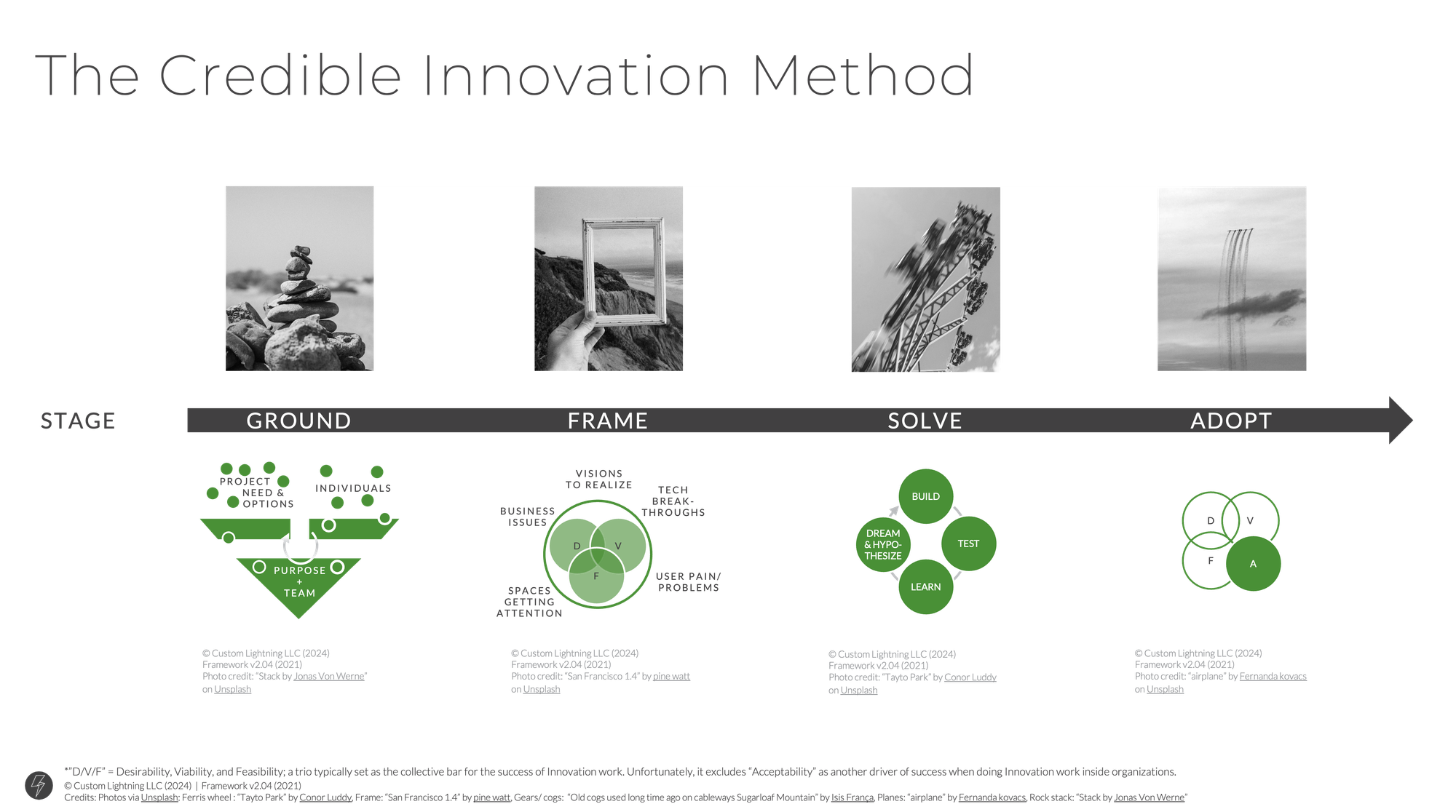TL; DR
At a time when we must focus on the here and now, don't focus on system reinvention.
Instead, focus on one of:
- System-reinforcement
- System-evolution
Which one matters for you depends on whether you believe that your current system still works, other than some issue, or whether your current version of yourself will be increasingly outdated and must turn into its next iteration.
Either way, the focus is on the business system, on why it's not good enough, and on what must-do success looks like right now.
What are these types of innovation?
I've talked before about how companies are, at their core, human systems. And innovation can be thought of not just as "creating new, non-obvious utility" but also as changing human systems. That's not the only way of thinking about them. But it sheds light on many of the problems we face.
What I haven't done yet (and shall remedy here) is to classify different kinds of innovation relative to this language of "systems."
I basically see three types:
- System-reinforcing
- System-evolving
- System-reinventing/ reimagining
Of those, much of my Credible Innovation work has focused on system reinvention.
But in the current environment, where the focus is on here and now and where many companies don't talk about innovation at all, we must focus on the other two: System-reinforcing and -evolving innovation.
Why aren't the standard ways to classify innovation good enough?
It’s surprisingly hard to classify “types” of innovation.
That’s because “standard” innovation classification systems often break down when you try to apply them consistently in practice.
The challenges result because these classifications often have fuzzy and/ or conflicting definitions (e.g., what is “transformational”?), and/ or only apply in certain, narrow situations (e.g., “disruptive” innovation, when used by its formal definition).
So this take of classifying innovation in a new way is just a work-around, for specific uses, where other classifications just don't help.
This work-around rests on the observation that a business is ultimately a system of human behavior, typically one that operates at a stable local maximum. In turn, you might further imagine that this human system is made up of component systems/ engines, for business, operations, finances, talent, etc.
This is helpful because it
- IS HIGH-LEVEL: I.e., it extracts you from the focus on individual functions
- IS ACTIONABLE: I.e., it focuses on more actionable problems than merely "we need more money," which, after all, underlies everything in a for-profit company
- IS HOLISTIC: I.e., it inherently contains the connections and dependencies across your business
- IS COMMON: I.e., it uses language that should relate to every function and level of your company.
It also has “duh but not-so-duh” practical implications:
- SEE YOUR BUSINESS AS A SYSTEM: It’s always true but rarely acknowledged, let alone spelt out practically and acted on.
- FOCUS ON ANY MUST-DO TOPICS: Even ingenious ways to cut costs can be innovation, if that’s what you need.
- CELEBRATE INNOVATION ANYWHERE: Professionals on any team can be creative and innovate, not just designers and engineers.
- ALL INNOVATION IS WORTHWHILE: Commercial and incremental innovation are just as good as adjacent and transformational, as long as they tackle your must-dos.
- INNOVATION GOES BEYOND PRODUCTS/ SERVICES: It never made sense to restrict innovation to the stuff you sell.
So then, how might one think about the two types of innovation that matter for the here and now?
As mentioned, both system-reinforcing and system-evolving innovation needs should be easy to frame in must-do terms, much more so than for system reinvention, the third innovation type in this trifecta.
System reinforcement
This happens when your innovation fundamentally makes your current business a better version of itself (better/ faster/ cheaper/ more refined/ up-to-date/ less error prone/ etc.).
System-reinforcing innovation often is not called “innovation” but considered “innovative” ways of doing some other discipline.
System evolution
This is when your innovation changes either all or critical/ identity-defining parts of the system
The nature of system-evolving innovation is in the middle of getting actively debated. But it’s often associated with terms like “evolve,” “transform,” “future,” etc.
Importantly, I consider it to be like Lean Manufacturing, where one attempts to eliminate “bottlenecks” to the whole system (i.e., problems with the current system that must change for the system to evolve). Those bottlenecks—and resulting need for improvement—can lurk anywhere. I.e., system-evolving innovation can focus on any part of the system—not just on products/ services, but also finances, operations, talent, etc. (This is controversial among innovation practitioners but currently appears critical and defensible to me.)
This is not a binary or objective classification. Like clustering, it involves parameter setting (for deciding what commonalities or differences to prioritize) and human judgement (for dealing with outliers).
Distinguishing features between the two innovation types
(1) WHAT: Whether the current version of the business system is worth fixing.
(2) HOW: Whether we can minimize risk in fixing it.
In system-reinforcing innovation:
- Fixability of the system: It is both possible and valuable to the organization to reinforce the current system by fixing its existing components.
- Approach to risk: The nature/ characteristics/ shape of the solution is fundamentally understood/ known by the company and its leaders. Risk be minimized.
In system-evolving innovation:
- Fixability of the system: It is fundamentally impossible or not worth it/ valuable to fix the system‘s broken components, from a total-organization perspective.
- Approach to risk: The nature/ characteristics/ shape of the solution is fundamentally unknown. Risk is an essential, unavoidable feature of the work.
When to use what type
Normally, use system-reinforcing innovation. Only evolve a system if you must.
After all, it may have taken millions of work hours to make your business system what it is today. Changing it may make it better. But it also may make it worse.
That said, if you truly must evolve, do so. Don’t avoid it. As a litmus test for checking whether you “must” evolve, consider explaining your idea to your most senior leader. Imagine that your fiercest critic is also there and brings up all reasons why your idea is bad:
Your leader asks you:
“So, in the face of all these complications, why should we do what you suggest?”
You have a “must-have” case for evolution if you can answer:
“Yes, I agree. All those risks and complications are true. But in the end, we should change because we must. It is truly unavoidable, even in the face of all the problems.”
In total, you might combine it into the following step-by-step decision guide:
1️⃣ What’s the simplest way to describe our entire business as a system? [This creates awareness of the business as a system and to the need of using system-level thinking.]
2️⃣ Do any parts of that system not/ no longer work? [This identifies the problem(s) to solve at a sufficiently high level to be meaningful to executives and to be able to identify the problem type next.]
3️⃣ Can we reinforce them, or is it impossible to restore this exact business system to health? If the latter, must we evolve the system itself, or can it become acceptable for the current system no longer to work healthily? [This is the core question. It determines both what kind of innovation we need and whether we need to change the core business or append a new venture, leaving the current system eventually to disappear.]
4️⃣ If someone tackled that problem, could we get meaningful results here & now? [This is a dual-function question: (1) It clarifies whether we are better off waiting to try to resolve the problem.(2) It forces people to start to think how we can get results here and now, which is a must-have.]
5️⃣ Is the critical competence for solving this problem an understanding of the system, understanding of problems like these, or already having the solution to the specific problem?[This determines whether choice of approach and work leadership should rest with process-centric/ core/ ops who run the business, special-project teams who don‘t otherwise run the business, or whether to buy/ partner on a solution.]
How to use this
The method(s) for implementing system-reinforcing innovation are fairly well understood, especially as part of management consulting practices.
There exist many ways for describing such innovation. A good general/ all-purpose method comes from McKinsey veteran Charles Conn (see links at the end of this post).
Conn’s high-level steps are:
- Define the problem
- Disaggregate the issues into a logic tree
- Prioritize the issues, prune the logic tree
- Build a work plan and timetable
- (I'd add: Prototype and test the solution lightly and fast)
- Conduct the critical analyses
- Synthesize analysis findings
- Prepare a powerful communication about your findings
The method(s) for implementing system-changing is under heavy debate and active evolution. I have condensed my take into this four-stage process:

To describe it verbally:
- Ground
- Set a must-have agenda
- Assess project needs & options
- Survey available capabilities and individuals
- Honestly combine into a purpose and team that can succeed
- Frame
- Start with the problem as it presents itself to you. E.g.
- Tech breakthrough to make use of (e.g., AI)
- New vision to realize
- New user pains/ problems
- New trends/ spaces getting attention
- New business issues
- Lay out a path from this natural starting point to the starting point of your preferred innovation method.
- Start with the problem as it presents itself to you. E.g.
- Solve
- Dream & hypothesize what might be
- Build solution candidates (product/ service or other)
- Test solution candidate
- Learn
- Iterate
- Adopt
- Create solutions that are
- Desirable to users/ customers
- Viable as businesses
- Feasible operationally
- Acceptable/ agreeable to your org – People skip this to their peril. Must consider from start.
- Create solutions that are
And finally, you know you have evolved effectively if you can reach the Credible Innovation success criteria that you know from elsewhere on this site, especially:
- Use selectively-awesome craft
- To work on a must-do purpose
- Reaching usable outcomes
Further reading
Charles Conn's work:
Article form: Conn, C., Sarrazin, H., & London, S. (2019). How to master the seven-step problem-solving process. https://www.mckinsey.com/capabilities/strategy-and-corporate-finance/our-insights/how-to-master-the-seven-step-problem-solving-process
Book form: Conn, C., & McLean, R. (2019). Bulletproof Problem Solving: The One Skill That Changes Everything. John Wiley & Sons. http://books.google.com/books?id=qUKEDwAAQBAJ&hl=&source=gbs_api


